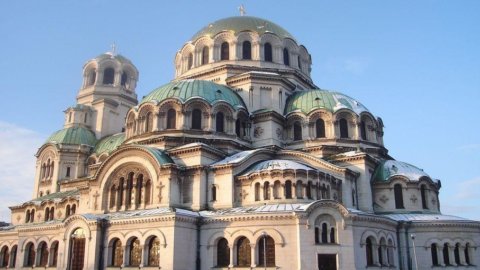The last time that Jacopo Robusti, aka Tintoretto, set foot in Venice was eighty years ago, but this year starting on September 7th until 6 January 2019 at Palazzo Ducale has returned with his paintings, the subject of a monographic exhibition on the artist, centered on the most fruitful period of his art – from his full success, towards the mid-forties of the sixteenth century, up to his last works – and at the same time a major exhibition at the Galleries of the Academy of Venice entitled The young Tintoretto, dedicated instead to the masterpieces of the first decade of activity and to the fertile context in which he began his artistic career.
The most Venetian among the artists of Renaissance, the one who best embodied the spirit of Venice with the unmistakable mark of his genius – called by doges and notables to embellish the city's palaces and churches – was in fact capable of astounding and impressing entire generations of art lovers. He amazed his contemporaries, impressed El Greco, Rubens and Velasquez, anticipated in many ways the sensibility of contemporary artists and now, 500 years after his birth, he returns to fascinate the public on the occasion of the celebrations that all of Venice dedicates to him, starting next september.
The focal point is the impressive exhibition project that since 2015 the Civic Museum Foundation of Venice developed with the National Gallery of Art in Washington and which has found the full collaboration of the Gallerie dell'Accademia in Venice.
The Young Tintoretto exhibition is curated by Roberta Battaglia, Paola Marini, Vittoria Romani and retraces the first decade of the Venetian painter's activity through about 60 works, from 1538, the year in which Jacopo Robusti's independent activity in San Geremia is documented, to 1548, the date of the clamorous success of his first public work, the Miracle of the Slave, for the Scuola Grande di San Marco, today the pride of the Gallerie dell'Accademia: an exciting journey that reconstructs that extraordinary period of stimuli and experimentation thanks to the which Tintoretto profoundly renewed lagoon painting, in a time of great change.
The exhibition brings together 26 exceptional paintings by Tintoretto, while enhancing the works of the museum's permanent collection and inserted within a new perspective and flanked by loans from the most important public and private institutions in the world: from the Louvre in Paris to the National Gallery in Washington, from the Prado Museum in Madrid to the Uffizi Gallery in Florence, from the Galleria Borghese in Rome to the Kunsthistorisches Museum in Vienna, from the Museum of Fine Arts in Budapest to the Fabbrica del Duomo in Milan, from the Courtauld Gallery in London to the Wadsworth Atheneum in Hartford. Among the masterpieces by Tintoretto that visitors will be able to admire are the Conversion of Saint Paul in the National Gallery of Art in Washington and the Contest between Apollo and Marsyas in Hartford, now exhibited for the first time in Italy, the Disputation of Jesus in the temple of Veneranda Fabbrica del Duomo in Milan, the Supper at Emmaus in Budapest and the ceilings from Palazzo Pisani in Venice, now in the Gallerie Estensi in Modena.
The exhibition itinerary investigates that period of Tintoretto's training, not easily attributable to a workshop or to an identified personality, relating it to the Venetian artistic and cultural context of the XNUMXs and XNUMXs. In this way it will be clarified how the artist acquired and transformed his models to develop a dramatic and revolutionary style, through the suggestions received from Titian, Pordenone, Bonifacio de' Pitati, Paris Bordon, Francesco Salviati, Giorgio Vasari, Jacopo Sansovino, present on display with significant works. The paintings and sculptures of artists of Tintoretto's generation who worked in the same environment will also be exhibited, including Andrea Schiavone, Giuseppe Porta Salviati, Lambert Sustris and Bartolomeo Ammannati. The exhibition is accompanied by an important volume, published by Marsilio Electa, with essays by Robert Echols and Frederick Ilchman, Vittoria Romani, Roberta Battaglia, Paola Marini, Paolo Procaccioli and Luciano Pezzolo.





